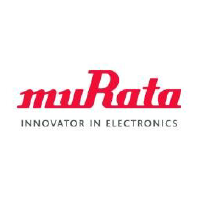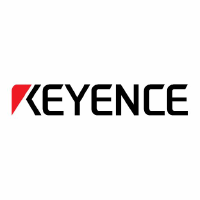Company Analysis Anritsu Corporation
1. Summary
Advantages
- Current debt level 2.54% is below 100% and has decreased over 5 years from 12.45%.
Disadvantages
- Price (1712.5 ¥) is higher than fair price (607.59 ¥)
- Dividends (4.97%) are below the sector average (30.47%).
- The stock's return over the last year (45.62%) is lower than the sector average (47.39%).
- The company's current efficiency (ROE=6.32%) is lower than the sector average (ROE=13.11%)
Similar companies
2. Share price and performance
2.1. Share price
2.3. Market efficiency
| Anritsu Corporation | Technology | Index | |
|---|---|---|---|
| 7 days | 2.8% | 27.4% | 4.6% |
| 90 days | 32.1% | 39.1% | 8.2% |
| 1 year | 45.6% | 47.4% | 1.4% |
6754 vs Sector: Anritsu Corporation has slightly underperformed the "Technology" sector by -1.77% over the past year.
6754 vs Market: Anritsu Corporation has outperformed the market by 44.19% over the past year.
Stable price: 6754 is not significantly more volatile than the rest of the market on "Tokyo Stock Exchange" over the last 3 months, with typical variations of +/- 5% per week.
Long period: 6754 with weekly volatility of 0.8773% over the past year.
3. Summary of the report
4. Fundamental Analysis
4.1. Stock price and price forecast
Above fair price: The current price (1712.5 ¥) is higher than the fair price (607.59 ¥).
Price is higher than fair: The current price (1712.5 ¥) is 64.5% higher than the fair price.
4.2. P/E
P/E vs Sector: The company's P/E (21.54) is lower than that of the sector as a whole (275.32).
P/E vs Market: The company's P/E (21.54) is lower than that of the market as a whole (150.15).
4.2.1 P/E Similar companies
4.3. P/BV
P/BV vs Sector: The company's P/BV (1.32) is lower than that of the sector as a whole (207.7).
P/BV vs Market: The company's P/BV (1.32) is lower than that of the market as a whole (120.08).
4.3.1 P/BV Similar companies
4.4. P/S
P/S vs Sector: The company's P/S indicator (1.5) is lower than that of the sector as a whole (206.86).
P/S vs Market: The company's P/S indicator (1.5) is lower than that of the market as a whole (120.98).
4.4.1 P/S Similar companies
4.5. EV/Ebitda
EV/Ebitda vs Sector: The company's EV/Ebitda (7.67) is lower than that of the sector as a whole (214.9).
EV/Ebitda vs Market: The company's EV/Ebitda (7.67) is lower than that of the market as a whole (120.75).
5. Profitability
5.1. Profitability and revenue
5.2. Earnings per share - EPS
5.3. Past profitability Net Income
Yield Trend: Negative and has fallen by -8.51% over the last 5 years.
Accelerating profitability: The return for the last year (0%) exceeds the average return for 5 years (-8.51%).
Profitability vs Sector: The return for the last year (0%) exceeds the return for the sector (-2.62%).
5.4. ROE
ROE vs Sector: The company's ROE (6.32%) is lower than that of the sector as a whole (13.11%).
ROE vs Market: The company's ROE (6.32%) is lower than that of the market as a whole (9.39%).
5.5. ROA
ROA vs Sector: The company's ROA (4.9%) is lower than that of the sector as a whole (5.61%).
ROA vs Market: The company's ROA (4.9%) is higher than that of the market as a whole (4.46%).
5.6. ROIC
ROIC vs Sector: The company's ROIC (11.81%) is lower than that of the sector as a whole (12.15%).
ROIC vs Market: The company's ROIC (11.81%) is higher than that of the market as a whole (8.83%).
7. Dividends
7.1. Dividend yield vs Market
Low yield: The dividend yield of the company 4.97% is below the average for the sector '30.47%.
7.2. Stability and increase in payments
Dividend stability: The company's dividend yield 4.97% has been steadily paid over the past 7 years, DSI=0.86.
Weak dividend growth: The company's dividend yield 4.97% has been growing weakly or stagnant over the past 5 years. Growth over only 0 years.
7.3. Payout percentage
Dividend Coverage: Current payments from income (68.61%) are at a comfortable level.
Pay for your subscription
More functionality and data for company and portfolio analysis is available by subscription
 Max Chat
Max Chat



